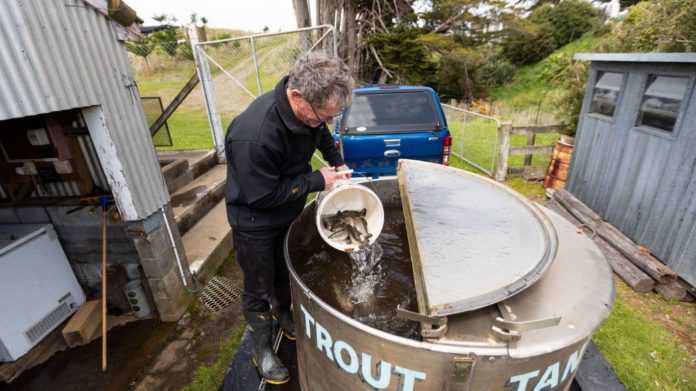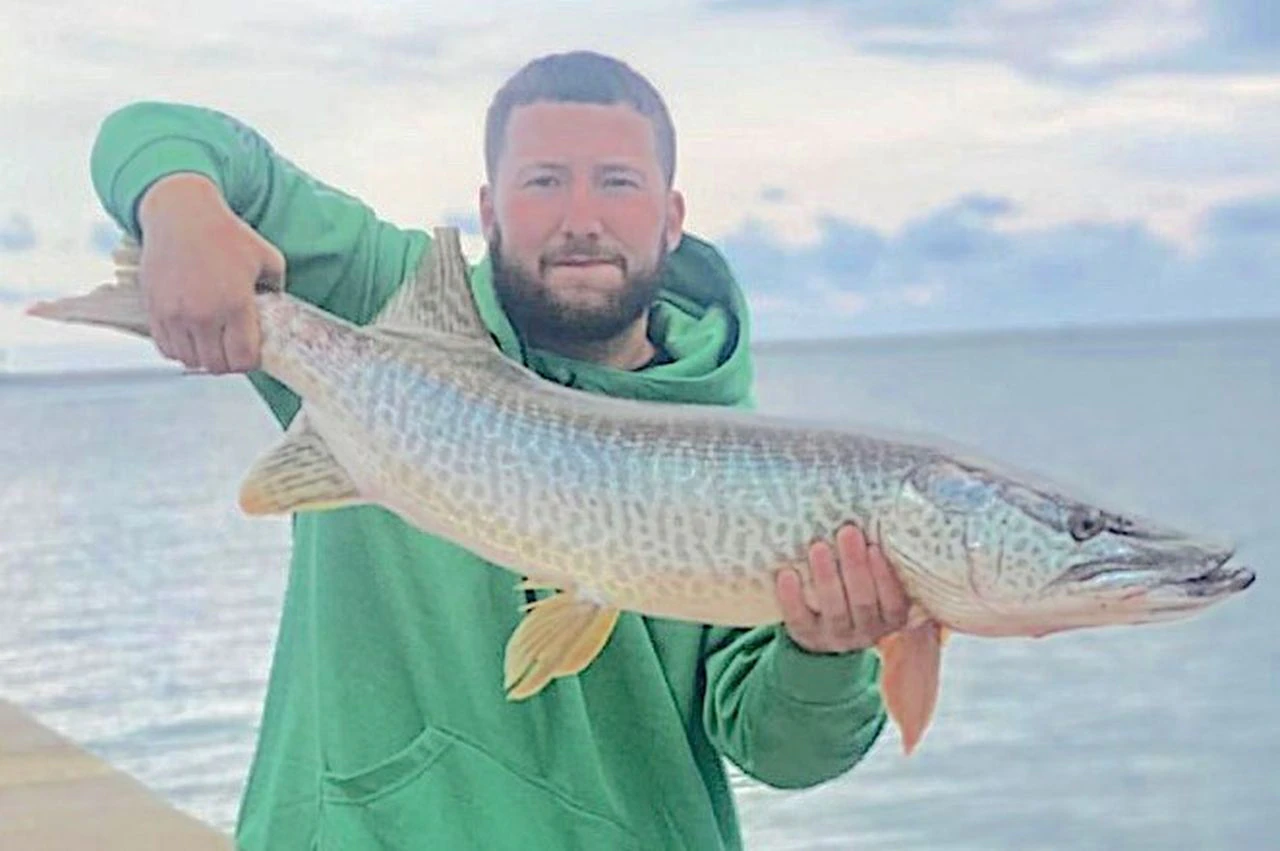Taranaki’s thousand odd freshwater anglers may attribute success to their “woolly bugger” flies, but credit must also go the region’s 134-year-old hatchery operation.
For more than a century Taranaki waterways have been annually restocked with releases of trout raised at an inconspicuous building hidden down the end of rough farm track in Hāwera.
Each year the hatchery receives thousands of tiny rainbow trout ova ready to be hatched into fry and grown into yearlings for release.
The Fish and Game managed hatchery, first established in 1886 by the Hawera Acclimatisation Society, supplies rainbow trout for six Taranaki lakes – Mangamahoe, Rotomanu, Ratapiko, Rotorangi, Opunake and Ngangana – and for Lake Namunamu in Manawatu.
READ MORE:
* Good start predicted for trout fishing season
* Taranaki rivers run low in September after variable weather across region
* Trout angler has vision set on chasing his own rainbows
* Big trout being caught in Taranaki as the season opens
The region’s rivers, except the Stony/Hangatahua River, are self sustainable with wild trout and don’t need to be restocked.
The Hawera operation is one of only three trout hatcheries in the North Island.
Fish and Game Taranaki senior ranger Allen Stancliff said the regular releases were vital for the health of Taranaki fisheries, and maximised angler’s fishing experience.
“It is small operation of around 2000 trout a year but vital to maintaining and restocking trout numbers,” he said.
“It is really about maintaining local fish for local waters.”
The process begins in mid-July each year.
A styrofoam chilly bin containing 3000 rainbow trout ova, or eggs, wrapped in sphagnum moss, is driven by courier to Hāwera from the Ngongotaha hatchery, near Rotorua, where the ova have been stripped from rainbow trout between 3 and 4 years old.
Once at the hatchery the ova are put in mesh baskets suspended over water troughs, where they hatch after 19 days and begin to “swim up” and feed.
SIMON O’CONNOR/Stuff
Tiny trout fry are raised from ova into yearlings at the Fish and Game managed trout hatchery near Hawera.
The present site beside the Tawhiti Stream was built in 1979. The first hatching in 1906, at a site near the Waihi Stream, produced 50,000 fry that were sold to neighbouring acclimatisation societies, and 30,000 yearlings were “liberated”.
Brown trout were also once reared at the hatchery but the bigger species’ solitary nature made breeding difficult and the focus reverted to rainbow trout.
Malcolm Hurley is one of 11 volunteers who monitor the hatchery year round, ensuring the fish are bred in good condition.
Mortality rates are as low as 3 per cent and infections, and high water temperatures during summer, are carefully checked by volunteers.
SIMON O’CONNOR/Stuff
Hawera trout hatchery volunteer Malcolm Hurley watches over water troughs containing thousands of juvenile trout fry.
The 3000 ova is less than the 40,000 eggs the hatchery used to rear in the past, Hurley said.
“The focus is on the hatchery growing smaller numbers of higher quality fish.”
Annual releases are essential to maintain trout numbers in the region – without it the wild population wouldn’t survive, he said.
SIMON O’CONNOR/Stuff
Hundreds of yearling rainbow trout are raised from ova at the Hawera trout hatchery ready for release into the regions lakes.
Hurley, with Dennis and Diana Bourke, help drain the concrete water troughs where hundreds of young trout have been reared during the past year.
The fish thrash around as the water level drops, and they are scooped up into buckets and put in a tank for journey to the release destination.
SIMON O’CONNOR/Stuff
Fish and Game member Curly McEwen trying out his casting skills on the fly fishing platform at Lake Mangamahoe.
Stancliff counts out the exact number of fish as they are poured into the trout tank.
The converted milk vat on a trailer carried deoxygenated cylinders to ensure the valuable cargo survive the transit.
Three years after being released the fish, which have had their hind most dorsal fin clipped to recognise them as hatchery-raised, will come back to the lakes to spawn.
Recently 300 yearlings were released into Lake Mangamahoe, and another 300 released into Lake Ngangana, near Waitara.
About 500 more mature trout will be released into the Stony River, and Patea River at Stratford’s King Edward Park for the annual family trout fishing day.
Credit: Source link































